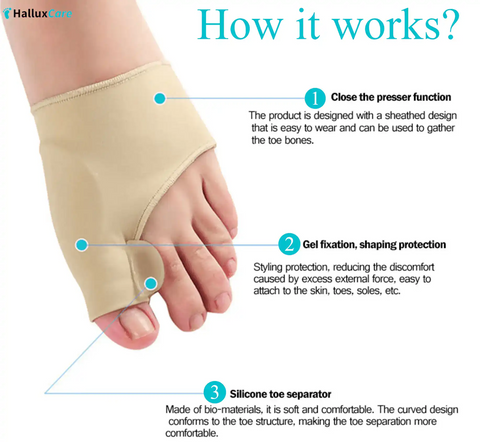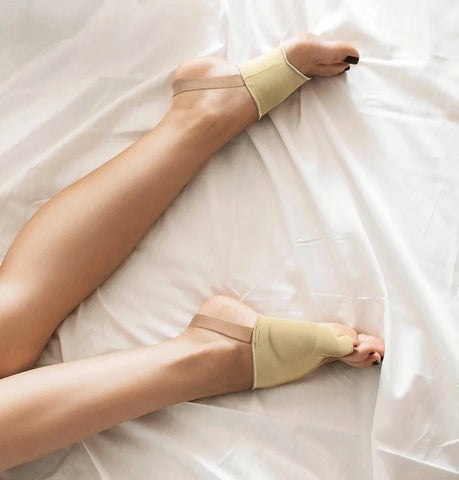Recovering from Bunion Surgery: A Real Patient’s Journey Through Lapiplasty Recovery
Last Updated: April 2025 | Reviewed by: Dr. Amanda Lewis, DPM, Board-Certified Podiatrist
If you’ve recently undergone bunion surgery—especially a Lapiplasty® procedure—you might be wondering what to expect during recovery. How long will the pain last? When can you walk again? What does “normal” feel like after the operation?
This comprehensive guide explores a real Reddit user’s 14-week Lapiplasty® recovery experience, supported by medical insights, expert tips, and practical tools to help manage bunion pain. Whether you're preparing for surgery or already healing, this article is designed to guide you through each phase of recovery with confidence.
---
What Is Lapiplasty® and Why Do People Choose It?
Lapiplasty® 3D Bunion Correction is a modern surgical innovation designed to correct the root cause of bunions—not just the visible bump. Traditional bunion surgeries often focus on shaving down the bone, but Lapiplasty addresses the misalignment in all three dimensions and stabilizes the joint at the base of the big toe (the first metatarsal).
Why It’s Gaining Popularity:
- ✅ Corrects the structural cause of bunions
- ✅ Reduces recurrence risk by stabilizing the joint
- ✅ Allows earlier weight-bearing and faster return to normal activity
According to the American College of Foot and Ankle Surgeons (ACFAS), addressing the metatarsal instability is crucial to preventing bunion recurrence, which Lapiplasty is specifically designed to do.
📚 Source: ACFAS Bunion Overview
---
Real Recovery: 14 Weeks After Lapiplasty® Surgery
A Reddit user recently shared their detailed recovery timeline following Lapiplasty®. Their candid post offers encouragement and insight for anyone navigating the post-op experience.
Week-by-Week Recovery Highlights:
-
Week 2
- Compression bandage removed
- First visual signs of healing and reduced swelling
-
Week 6–8
- Transitioned out of the surgical boot
- Started wearing regular shoes again (with wide toe boxes)
- Walking resumed with minimal discomfort
-
Week 14
- Foot feels nearly normal during everyday activities
- Resumed low-impact exercises like biking and rowing
- Gradual improvement in strength and flexibility
4.9 ⭐⭐⭐⭐⭐ ( 1843 reviews )
---
Expert Recovery Tips for Lapiplasty® Patients
Healing from bunion surgery is a process, and following expert guidance can make all the difference. Here are clinically supported tips to guide your journey:
1. Be Patient with Progress
Healing timelines vary, and setbacks are normal. Focus on gradual improvements and follow your podiatrist’s instructions closely.
2. Use Medical-Grade Support
Podiatrist-approved bunion sleeves can reduce inflammation, relieve pressure, and assist in toe alignment post-surgery.
3. Ease Into Activity
Low-impact exercises such as stationary cycling and rowing can help maintain circulation and joint flexibility. Always get your surgeon’s clearance before resuming exercise.
4. Wear the Right Footwear
Once cleared to transition out of the boot, choose shoes with a wide toe box, arch support, and cushioned soles. Avoid heels or tight-fitting shoes for at least 3–6 months.
📚 Tip Source: American Podiatric Medical Association (APMA)
---
Non-Surgical Relief Options for Bunion Pain
If you're not ready for surgery or just beginning to experience bunion pain, there are effective non-invasive treatments to explore:
Conservative Care Options:
- ✅ Orthopedic Bunion Sleeves: Provide support and help realign the big toe
- ✅ Foot Strengthening Exercises: Strengthen intrinsic foot muscles for better alignment
- ✅ Cold Compress/Ice Therapy: Reduces inflammation and numbs pain
- ✅ Castor Oil Massage: Naturally reduces swelling and improves circulation to the joint
If you're looking for relief from bunion pain, consider using the Orthopedic Bunion Pain Relief & Correction Sleeve , which provides support and helps to alleviate discomfort.
For additional protection, the Tailor's Bunion Bunionette Pain Relief Protection Sleeves are designed to offer comfort and protection for bunionette pain.
To nourish and soothe the skin around bunions, as well as to promote healthy hair, consider the Jamaica Black Castor Oil Soothing Oil . Known for its moisturizing and anti-inflammatory properties, it helps alleviate discomfort around bunions and supports hair growth and scalp health.
---
Visual Update: 14 Weeks Later
Wondering what a healing foot looks like months after Lapiplasty®? This Reddit user shared a post-op photo showing improved alignment and reduced swelling.
🔍 Click here to view the photo
The image highlights proper toe positioning and minimal scarring—clear signs of progress.
---
Your Voice Matters: Share Your Experience
Have you undergone bunion surgery or explored non-surgical treatments? Your story could help someone else navigating the same path. What worked best for you during recovery? Was there a key turning point?
📢 Drop a comment below and join the conversation.
---
Key Takeaways
- ✅ Lapiplasty® addresses the root cause of bunions, not just symptoms
- ✅ Recovery is gradual—expect 3–6 months for full strength
- ✅ Medical-grade sleeves and supportive footwear can aid healing
- ✅ Non-surgical options can offer relief for early-stage bunions
- ✅ Real patient stories provide valuable insight and encouragement
---
Frequently Asked Questions (FAQs)
How long is recovery from Lapiplasty® surgery?
Most patients begin walking in a boot within days and return to regular shoes by 6–8 weeks. Full recovery—including return to high-impact activities—can take up to 4–6 months.
Is Lapiplasty® more effective than traditional bunion surgery?
Yes. Studies show that Lapiplasty® has a lower recurrence rate due to its 3D correction and joint stabilization. Source: Journal of Foot and Ankle Surgery, 2022
Can bunions come back after Lapiplasty®?
The recurrence rate is significantly lower than traditional procedures, but recurrence can still happen if post-op care and footwear recommendations are not followed.
What can I do to relieve bunion pain without surgery?
Using orthopedic sleeves, applying ice, massaging with castor oil, and practicing foot-strengthening exercises can all help reduce pain and pressure from bunions.
About the Author
Dr. Amanda Lewis, DPM
Board-Certified Podiatrist | Member, American Podiatric Medical Association
With over 12 years of clinical experience, Dr. Lewis specializes in surgical and non-surgical treatment of bunions and other forefoot conditions.
---
✅ Whether you're healing from surgery or managing bunion pain conservatively, recovery is possible—with the right tools, guidance, and support.




